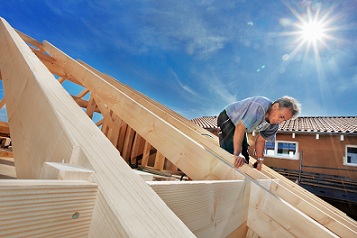New technology to help protect wood

Related topics
Innovation SMEs Innovation in SMEs Sustainable agriculture and forestry Czechia Germany Slovenia Spain Turkeydate: 17/01/2014
Project: Development of a cost-effective, durable...
acronym: DURAWOOD
See also: Info-centre
Contact: http://www.iris.cat/
The project was prompted by new European Union (EU) rules aimed at replacing solvent-borne coating systems with water-borne coatings for outdoor wood preservation purposes. Although water-borne coatings are more environmentally friendly, these wood treatments are more susceptible to both weathering and mould damage. Durawood project team thus developed a pre-treatment that allows water-borne coatings to compete with their conventional counterparts in terms of durability.
The plasma protection is designed to increase the adhesion of the coating and therefore its resistance over time. “After a while, the traditional wood coatings become brittle, faded and fall away,” says Durawood project coordinator Elodie Bugnicourt. Left untreated, the moulds can burrow deep inside the wood, breaking down the vital lignin or cellulose compounds inside the cells, and leading to massive structural damage.
Unprotected wood is also vulnerable to various fungi. A particular nuisance is the blue-stain fungus, a mould that grows on the surface of the paint, causing decay and staining. Its pigmented spores, the reproductive structures of seeds, can colonise both the surface and the wood interior, leading to unsightly blue or grey discolouring while compromising the wood's durability.
Plasma treatment is a versatile and powerful technique: by producing high frequency electric discharges, plasma generates 'ionised' gas that can change the surface properties of the material it is in contact with. Bugnicourt says the consortium looked at plasma treatments as they can either 'hydrophobise' (waterproof) wood surfaces or make them more compatible with waterborne coatings. She says the plasma pre-treatment could add five to seven years life to the wood.
“Plasma is an innovative technology with many applications, and is something that we will hear more from over time,” Bugnicourt says. “It has many qualities, and is used, for example, in the food and pharmaceutical industries to sterilise. During this project, we developed a lot of valuable knowledge and know-how regarding how plasma adds to wood protection,” she adds.
The European wood processing industry – which includes forest workers and sawmills - employs some 3.5 million people and generates an annual turnover in the region of €400 billion. Bugnicourt says between 50 and 100 million tonnes of wood could use Durawood pre-treatment system every year.
“Durawood could help the timber industry by improving the quality of products and extending their lifetime,” she explains.
As a low-cost, low energy and high-speed wood pre-treatment, Durawood would allow manufacturers to apply it on-site immediately before other wood coating operations. That means wood processers can protect their products and materials more effectively without harming the environment, while observing the legislation. “It’s a cost-efficient, durable, and environmentally friendly technology,” says Bugnicourt. “It means better use of forest resources, longer lasting wood products, and for end users, less maintenance,” she concludes.
